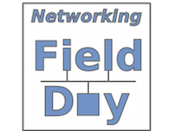Check Cisco ASA Connections with Nagios
 Once you’ve setup your Cisco ASA, you will want to monitor it to ensure that it’s operating normally. The plugin nm_check_asa_connections for Nagios, and compatible products, can warn your if the number of current connections gets too high. A very high connection count might indicate that there’s an attack under way on one of your servers, you have some hosts on your inside which are part of a botnet and is attacking someone else, or perhaps you’re just about to grow out of your current firewall and need an upgrade to a more powerful box.
Once you’ve setup your Cisco ASA, you will want to monitor it to ensure that it’s operating normally. The plugin nm_check_asa_connections for Nagios, and compatible products, can warn your if the number of current connections gets too high. A very high connection count might indicate that there’s an attack under way on one of your servers, you have some hosts on your inside which are part of a botnet and is attacking someone else, or perhaps you’re just about to grow out of your current firewall and need an upgrade to a more powerful box.
Comware7: MAD BFD support on Management Ethernet port
Multiple-Active Detection (MAD) is used to detect a split brain in an IRF system. When the MAD BFD method is used, a dedicated Layer3 VLAN interface needs to be configured for the MAD BFD operation. This VLAN should be directly … Continue readingShow 223 – Viptela and the Software Defined WAN
As the industry adoption of SDN gains rapid traction, the Wide Area Network is emerging as the leading use-case (read 2015 is all about SD-WAN). Aging architectures make the WAN the dinosaurs of enterprise infrastructure. While WAN optimization can address a short-term capacity problem, the bigger problems of high circuit costs, network rigidity and poor […]
Author information
The post Show 223 – Viptela and the Software Defined WAN appeared first on Packet Pushers Podcast and was written by Greg Ferro.
Check Cisco ASA Connections with Nagios
 Once you’ve setup your Cisco ASA, you will want to monitor it to ensure that it’s operating normally. The plugin nm_check_asa_connections for Nagios, and compatible products, can warn your if the number of current connections gets too high. A very high connection count might indicate that there’s an attack under way on one of your servers, you have some hosts on your inside which are part of a botnet and is attacking someone else, or perhaps you’re just about to grow out of your current firewall and need an upgrade to a more powerful box.
Once you’ve setup your Cisco ASA, you will want to monitor it to ensure that it’s operating normally. The plugin nm_check_asa_connections for Nagios, and compatible products, can warn your if the number of current connections gets too high. A very high connection count might indicate that there’s an attack under way on one of your servers, you have some hosts on your inside which are part of a botnet and is attacking someone else, or perhaps you’re just about to grow out of your current firewall and need an upgrade to a more powerful box.
Continue reading
Key questions to consider when evaluating hybrid cloud
This vendor-written tech primer has been edited by Network World to eliminate product promotion, but readers should note it will likely favor the submitter’s approach.
Hybrid cloud is the talk of IT, but to avoid costly, labor-intensive megaprojects you cannot escape, pay particular attention to minimizing implementation and management complexity. These questions will help you identify the best hybrid cloud architecture for your environment:
1. What are the top ways we will use our hybrid cloud in the next 12 to 18 months?
In the midmarket, the No. 1 answer is disaster recovery (DR). A secondary data center for DR is a luxury most companies can not afford. Now, public cloud services have put DR within reach of virtually all organizations. The key is to identify the enabling technology that minimizes complexity, maximizes automation and does not overtax the IT staff. Easy cloud DR solutions exist today for midsized shops; don’t be lead into a heavy professional services project.
To read this article in full or to leave a comment, please click here
Comware7: Routed port ACL packet-filter applies to switched traffic
There is a tricky “new” behavior in Comware7 Layer3 VLAN ACL processing: the applied ACL does not only filter the inter-vlan routed traffic (as would be expected), but it is applied to intra-vlan switched traffic as well by default. This … Continue readingDebunking the myths about scale-up architectures
This vendor-written tech primer has been edited by Network World to eliminate product promotion, but readers should note it will likely favor the submitter’s approach.
When growing capacity and power in the data center, the architectural trade-offs between server scale-up vs. scale-out continue to be debated. Both approaches are valid: scale-out adds multiple, smaller servers running in a distributed computing model, while scale-up adds fewer, more powerful servers that are capable of running larger workloads.
Today, much of the buzz is around scale-out architectures, which have been made popular by companies like Facebook and Google, because this architecture is commonly viewed as more cost-effective and “infinitely” scalable.
To read this article in full or to leave a comment, please click here
Networking Field Day 9 Is Almost Here!

Confession: I fly out to San Jose, CA for Networking Field Day 9 tomorrow morning and I have yet to pack a single thing.
This last minute preparation thing seems to have become a habit. I’d like to tell you that it’s because I’m a seasoned traveller and I can calmly pack for a two week vacation in under 15 minutes, but really it’s just procrastination. It’s not even that I dislike travel; I quite enjoy going places and I definitely enjoy Networking Field Day so I know there’s something amazing waiting for me when I get there. I conclude then that my lackadaisical approach to travel packing is laziness in its purest form.
Networking Field Day 9
Any idea of being lazy at NFD9 though is laughable. As ever, we have a packed schedule meeting some really interesting vendors. There are some old faces and some new ones both in the attendees and the vendors!
Wednesday 10th February
- VeloCloud – “Cloud-Delivered Software Defined WAN”. If they give prizes for buzz-word density, VeloCloud just won. The only thing missing is “as a Service”. Humor aside, VeloCloud seem to have an interesting product; it sounds almost like Cisco Continue reading
8 Networking Trends to Watch in 2015
by Kevin Dooley originally published on the Auvik blog Let’s lay it on the table: I’m really bad at predicting long-termGet Started with CloudFlare ServerShield for Plesk
 ServerShield makes it easy to activate CloudFlare and StopTheHacker.
ServerShield makes it easy to activate CloudFlare and StopTheHacker.
CloudFlare has partnered with Parallels, the leading hosting solutions provider, to make server protection, content acceleration and malware removal easier than ever. We recently launched CloudFlare ServerShield® to all Plesk 12 users as an extension. ServerShield combines the performance and security features of CloudFlare with the malware scanning and removal solution of StopTheHacker. Whether you are a hosting provider looking to offer additional services to your customers, or a Plesk server user, you can access ServerShield with two easy clicks.
Already, a number of hosters and agencies have found ServerShield a key addition to their tools to help their customer sites’ security and performance. Rafal Kukla of Kukla Studio, a UK based design agency, has this to say:
“ServerShield made it straightforward to give my customers industry leading security and performance as well as reputation monitoring. Running a busy agency, I am focused on my customers' site design, ServerShield allows me to do that without sacrificing the fundamentals of site functionality. With one single click I can enable CloudFlare among all my customers instead of spending time configuring each site separately.”
We believe that this extension is incredibly timely Continue reading
AnsibleFest London Presentations
-1.png)
We had our biggest and best AnsibleFest last week in London! This was our 1st Ansible event outside of the United States and due to the amazing turnout and great crowd we will definitely include at least one stop overseas in 2016.
If you were not able to attend, or just wanted to see the presentations, we’ve compiled all of them here:
How to automate Big Data with Ansible - Marius Boeru, BigStep
Ansible and Vagrant - Sebastian Göttschkes, wogibtswas.at
The Devs Are Opsing (And It Isn’t Painful) - Ali Asad Lotia, Blue Newt
Ansible, Windows, and Powershell - Jon Hawkesworth, M Modal
How Rackspace Is Deploying OpenStack With Ansible - Walter Bentley, Rackspace
What's New in V2 - James Cammarata, Ansible
Ansible Internals - Brian Coca, Ansible
We’ll be announcing the next stop in the AnsibleFest tour soon (hint: It is New York City) so follow us on Twitter to find out all of the details first!
View our Ansible Tower Video here to learn all about the great features available in Ansible Tower.
Cutting The Cord – Ditching the CableTV Bundle!
I finally did it! I cut the cord on cable today (2/7/15). I have been considering cutting the cord for about a year or so now, but never was really motivated to cut it. My cable bill was high (over $200/mo), but I was in a bundled package with my cable, internet, and phone – […]
The post Cutting The Cord – Ditching the CableTV Bundle! appeared first on Fryguy's Blog.
Let’s Meet in Zurich or Heidelberg
I’ll be speaking at two conferences in March: SDN event in Zurich organized by fantastic Gabi Gerber, and the best boutique security conference – Troopers 15 in Heidelberg. If you’ll be attending one of these events, just grab me, drag me to the nearest coffee table, and throw some interesting questions my way ;) … and if you happen to be near one of these locations, let me know and we might figure out how to meet somewhere.
Read more ...Blessay: Enterprise IT Comes Last In Technology Innovation
There was a time when Enterprise IT defined the future of computing. Laptops were designed for corporate consumption first and the best software was sold to enterprise for business use. The other markets for computers was “home users” who were offered cheap, low quality and low performance versions of corporate computers. IT was critical to the […]
The post Blessay: Enterprise IT Comes Last In Technology Innovation appeared first on EtherealMind.
Friends May Come and Go…
We overuse the word “friend” in our world — especially the technical world. We tend to call anyone we’ve ever met a friend. In this environment, friends come and go almost constantly, flowing through our lives like the leaves in a brisk fall wind. The depth to which Facebook and LinkedIn dive into our personal relationships — reminding us of birthdays, telling us who’s having a work anniversary, telling us when we should say the right thing at the right time to keep the “friendship” alive and current. But this somehow robs the concept of friendship out of, well, friendship. There’s no sacrifice, not even any effort — you have to question the value of “friendship” on these terms. It almost seems that social networking has made us less social, and less attuned to real friendship.
How do we live in this world?
I would first suggest reviving the concept of being intentional about friendship. Rather than just letting people fall into and out of our lives, we need, particularly as engineers, to decide to hold on to some friends, to intentionally make these people a fixture in our lives. We need to be careful not to make these choices Continue reading